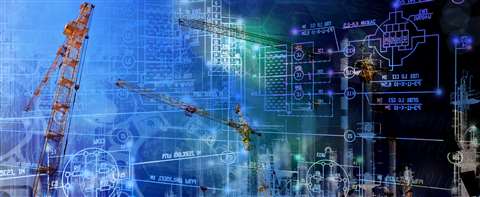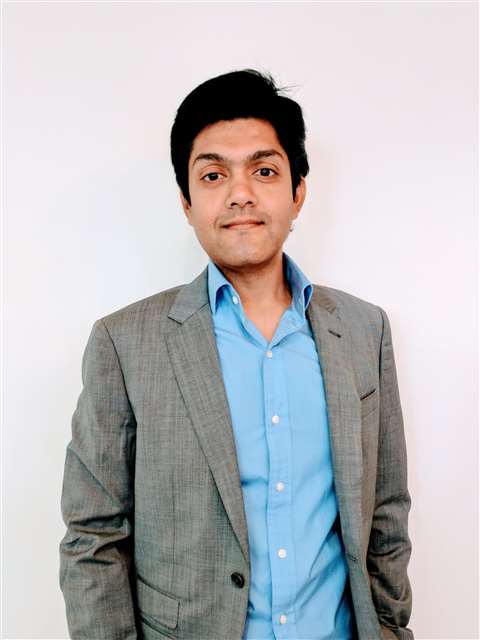AI – a more intelligent way to build
22 February 2022
A view of how artificial intelligence is set to revolutionise the construction industry
The construction industry has historically been slow on the uptake of new technologies, with the benefits often overshadowed in favour of hands-on experience and expertise.
 Image: Adobe Stock
Image: Adobe Stock
However, when project teams are operating complex and disjointed systems, processes can quickly become fragmented with operations being executed in siloed systems.
For a technology to truly become invaluable, driving trust and collaboration between members of project teams, the industry must collectively embrace intelligent construction platforms.
Since the onset of the pandemic, the industry is experiencing a new wave of digitisation, enabling organisations to creatively use new technologies to solve traditional problems.
Right now, investment in construction technologies is at an all-time high, but it’s only been more recently that the focus has shifted to artificial intelligence (AI).
The power of AI
As digitisation continues to be embraced by the construction industry, the vast amounts of data generated provides teams with a significant opportunity to learn from and use information to create better estimates, plan the project schedule smarter, and help avoid – or at least mitigate – potential risks.
The basic ingredient for AI to work is data and a lot of computing power, which in turn identify patterns in the data and produce insights.
With the advent of the cloud and ever-increasing computing capabilities now within the reach of most companies, the use of AI can become a reality in the construction field.
AI acts as a force multiplier from investment in digital initiatives.
When business processes are digitised, there are often immediate productivity gains.
The data these systems generate can help produce valuable descriptive analytics that can aid decision making in the field.
It can help determine what actions need to be completed today, who or what is holding up a certain process, whether the schedule is on time and the current state of the budget.
With AI, it takes these insights a step further by powering predictive analytics. The ability to gain insights from historical and real-time data, and applying them to current projects, is key to providing a basis to prevent mistakes from being repeated and ensure there is a focus on driving continuous improvements.
AI therefore shifts the focus from lag indicators to lead indicators. Most of the current reports and dashboards are being used to focus on “what has happened” or “what is happening” on projects, typically after an event or task has occurred.
With AI, there is a huge opportunity to take proactive take action on “what might happen?”
AI can be used to analyse project schedules and identify activities that are at risk of being delayed.
AI can also be used to detect risks of disputes, change events or variations. This can be a total game-changer when done right, as it has the potential to help deliver projects ahead of time, improve profit margins, and reduce risks significantly.
How AI can improve construction as we know it
Over the next few years, the industry is set to face massive disruptions stemming from the labour and supply chain shortages that have recently disrupted the industry. These issues are not going away anytime soon.
AI holds enormous potential to help engineering and construction organisations by empowering project team members with a decision-making solution that is rooted in historical performance, state-of-the-art machine learning and data.
AI can act like an additional team member that is constantly monitoring the project landscape for early signs of risks and surfaces them before they become an issue. These could range from risks found on a job site, including added costs, compliance violations, litigation, or health and safety issues.
As a result of the continued adoption of technology and consequent creation of data, new intelligent technology platforms, powered by an AI and machine learning (ML) “data backbone”, can help organisations better utilise their data and convert it into the intelligence needed to accelerate performance by acquiring new capabilities, previously not feasible or not possible to implement in a cost-effective manner.
AI technologies enable organisations to regularly monitor developments and adjust plans using up-to-date predictive insights, essentially helping them succeed in the present, and learn from the past to improve the future.
AI vs the traditional approach
With a projected annual growth rate of 5.71% over the next three years, the construction industry is under pressure to keep up with demand. Every aspect of project delivery now requires an overhaul and is ripe for disruption.
AI-powered systems can compute massive volumes of data that traditional approaches have not been able to previously. They can do this at a fraction of the time and a fraction of the cost than that was required previously.
This is especially true for processing and mining unstructured data such as photos, videos, and text and converting them to insights and intelligence.
This can range from using Natural Language Processing to mine text data for early warnings, using anomaly detection to detect unexpected data points and using computer vision to track progress, detect issues missed by inspectors, for tracking material delivery and labour movement on-site.
The possibilities are endless with this type of technology and we are only beginning to scratch the surface.
AI is also self-learning, where the system evolves as it learns from feedback provided by the user. Traditional systems require manual human interaction to update and apply new rules or logic. AI systems constantly improve their algorithms based on both user-feedback and re-train on new data that becomes available.
Furthermore, there is complete transparency about their accuracy as most systems show accuracy and precision scores. The accuracy of these systems gets better over time as the system continues to learn.
Also, since AI uses probabilities to estimate and forecast what is likely to happen, it allows organisations to prepare for different scenarios that might arise and mitigate potential challenges before they arise.
While a lot that can be learned from the past, the ability to predict the future and help organisations make the decisions needed to change the course of a project before it’s too late is the real benefit of AI.
|
About the author  Oracle’s Karthik Venkatasubramanian Oracle’s Karthik Venkatasubramanian
Karthik Venkatasubramanian has global responsibility for defining and delivering the data strategy within Oracle Construction and Engineering. In a career spanning 20 years across four continents, Karthik has been instrumental in building digital capabilities from the ground-up across many industries and organisations where he has successfully led several large-scale transformation programs that have been the featured in case studies, patent applications, industry publications and international conferences. He has an Engineering Degree in Electronics and Communication and a MBA from Melbourne Business School. He is also part of the Industry Advisory Board within the Department of Information Systems and Business Analytics at Deakin Business School. Karthik is a passionate believer in creative innovation through the use of technology and infuses an element of “dataism” in almost everything he does. His current focus is on the application of data science techniques in solving real-world construction and engineering problems. |
STAY CONNECTED



Receive the information you need when you need it through our world-leading magazines, newsletters and daily briefings.
CONNECT WITH THE TEAM







